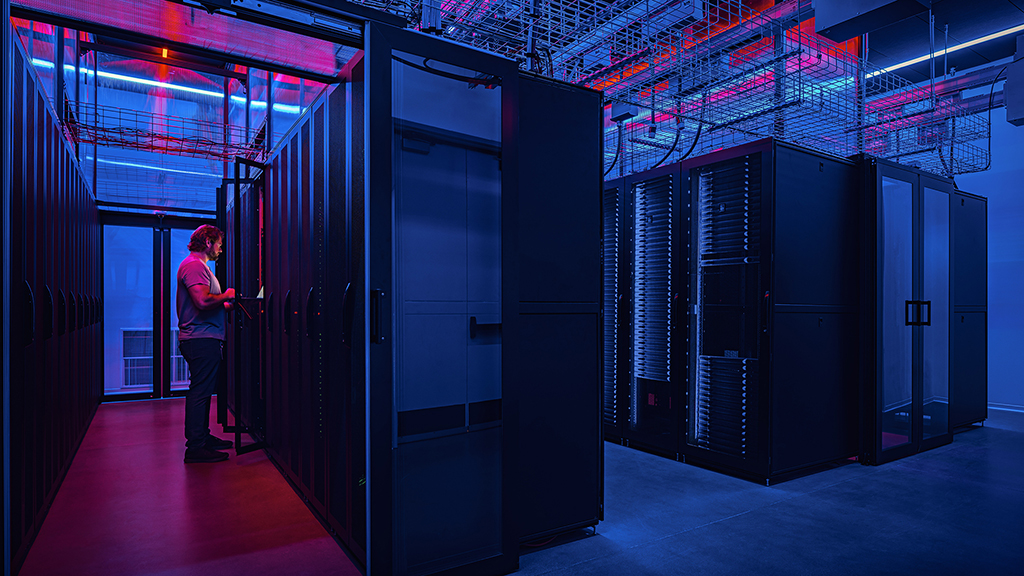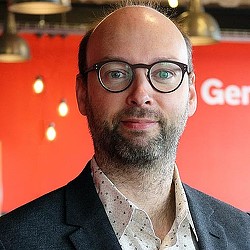How AI Is Driving Innovation in the European Data Centre Market
May 07, 2025 | By Joost Lansbergen
Now that AI is firmly established as the next big thing driving the data centre market, Europe is facing a sense of urgency to build facilities dedicated to the new technology. This won’t come without challenges. There are key issues that need addressing before the data centre boom can reach its full potential, predominantly around carbon impact and power requirements. AI data centres require an increased amount of power to operate when compared to cloud storage solutions. Fortunately, the scale of the demand is driving innovations in energy generation, grid infrastructure, and cooling technologies.
Direct-to-chip liquid cooling, also known as direct liquid cooling (DLC), is a method of cooling computer chips and other high-heat-generating components by circulating liquid coolant directly over their surfaces. This method, which is now the go-to cooling solution for these facilities, can support up to 10 times more power density than conventional air cooling. That said, direct-to-chip liquid cooling is not a bolt-on solution. It requires additional (external) chilled water to support the increased cooling load. This is particularly significant in the European market because it requires a complete overhaul of the continent’s mechanical systems in data centres.
In short, the future of AI data centres is inextricably linked to the infrastructure required to power it — including the buildings themselves, which must evolve along with the technology.
The future of data centre design in Europe
For a long time, there has been a debate about the best locations for data centres. Should they be in high-rise structures in urban settings so they can be close to end users and network gateways? Or should they be in industrial parks or in rural locations where land is more readily available?
Due to the power requirements associated with AI, many in the industry are leaning towards a rural approach where they can more easily configure their own power supply. This, however, contradicts the preference for AI data centres to be located closer to the source of the need for reduced latency in data delivery.
Data centre operators cannot rely solely on the existing power grid to provide the required electricity. These facilities need to be built in tandem with data centres. In its most basic form, this means the development of new and more substations. However, increasingly we are seeing major data centre campuses being fitted with their own power plants.
Small modular reactors (SMRs) are the buzzword of the moment. These smaller, more versatile, and decentralised versions of traditional nuclear reactors offer the potential to generate low-carbon electricity while addressing many of the challenges associated with larger nuclear plants.
The downside to nuclear generation facilities — even at small scales — is that physical space requirements due to nuclear safety regulations aren’t as small as the name suggests. Also, they are unlikely to appeal in equal measure to all local authorities. Countries with a traditional nuclear industry, like France and the U.K., may be comfortable with the concept, but others like Germany likely aren’t. The country phased out their last three nuclear power plants in 2023 and has invested heavily in gas-, wind-, and solar-based power facilities, which are generally easier to implement, at lower capital expenditure (capex).
As a sidebar, wind and solar power offer excellent opportunities to further decarbonise the energy grid as a whole. A good example is what’s projected in the Middle East and the U.S., where massive AI campuses are planned, along with new sustainable energy plants.
Data centre design and new chip technology
Improvements in chip technology are also driving the form that data centres will take in Europe. As we’ve seen over the past two years, the chips used to power AI are evolving rapidly, and the buildings we design now are likely to need overhauls in the next ten years to accommodate new technologies. A data centre designed for 50kW racks has four times the floor area required for 200kW racks. It won’t be long before those 50kW rack buildings will be significantly underpowered.
What does this mean for data centre design today? This may result in more flexible designs in which buildings are built to change over time, but it could also mean limited-life-span data centres. These structures — and the technology in them — would be planned and designed for disassembly and repurposing ahead of time. Large, concrete multi-storey big box data centres already seem outdated.
This won’t be the end of multi-storey data centres in urban locations per se, but signs point to those facilities being more focused on applications that require less power density than AI. We may see data centre operators increasingly specialising in specific segments of the overall market. Some will focus on AI, while others will focus on cloud services, which is also driving significant growth in the European data centres market.
What’s next?
New technological advancements are already on the horizon and could significantly impact data centre design. Direct-to-chip liquid cooling can only cool so much. Will we move to large-scale immersive cooling applications next?
Also, the jury is still out on whether the increase in power density will continue. New AI models, such as the one we’re seeing from Chinese company DeepSeek, are demonstrating that they can function quite well with lower-standard, cost-effective chips.
If DeepSeek is able to continue to train its models using less powerful chips, that could prove that high performance can be achieved without relying on the most expensive hardware — and the most energy intensive computational machines. There may come a time in the near future in which AI will continue to get better with existing resources.
The future is not yet defined, but the German word “Zeitenwende” seems very applicable to data centres today. It means “change of era,” and that’s exactly where we are now.
For media inquiries, email .

